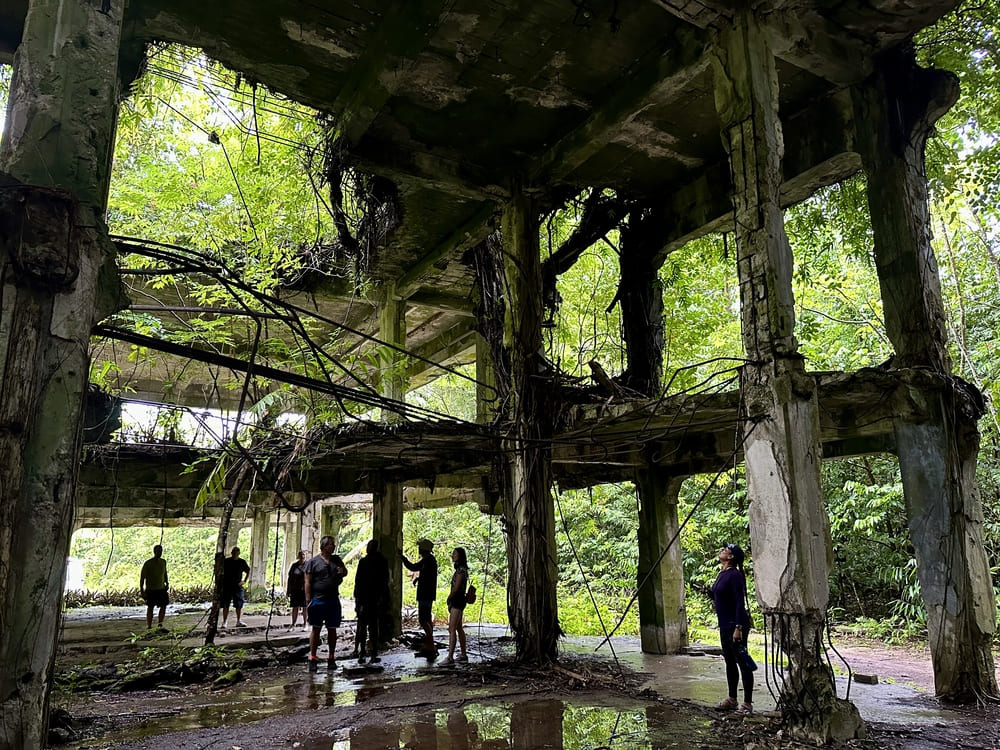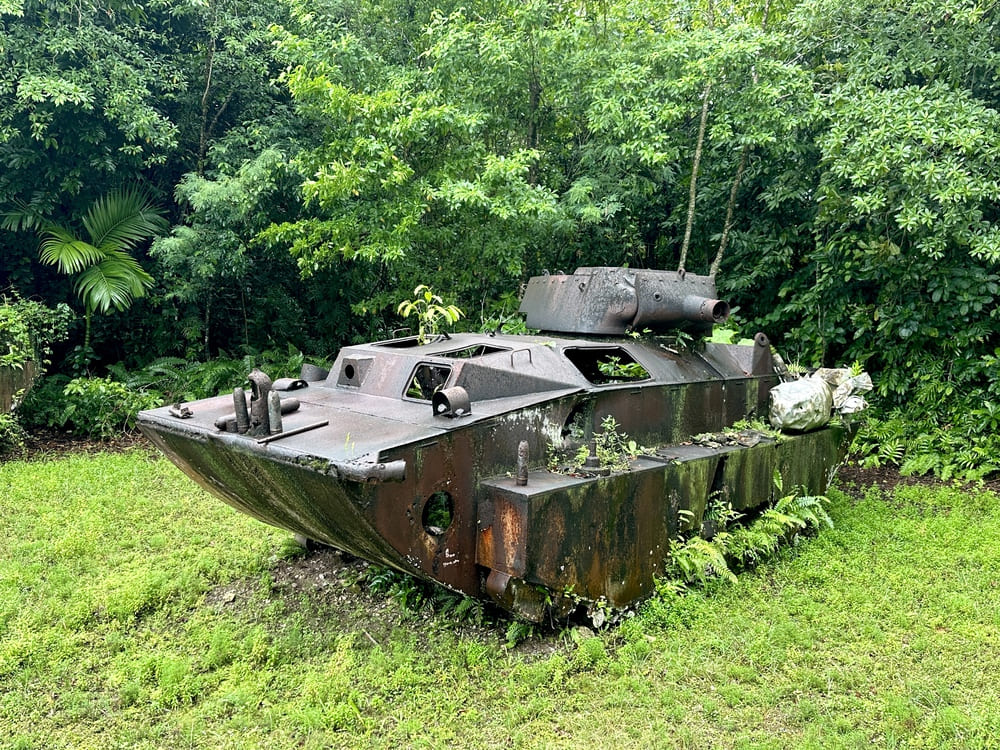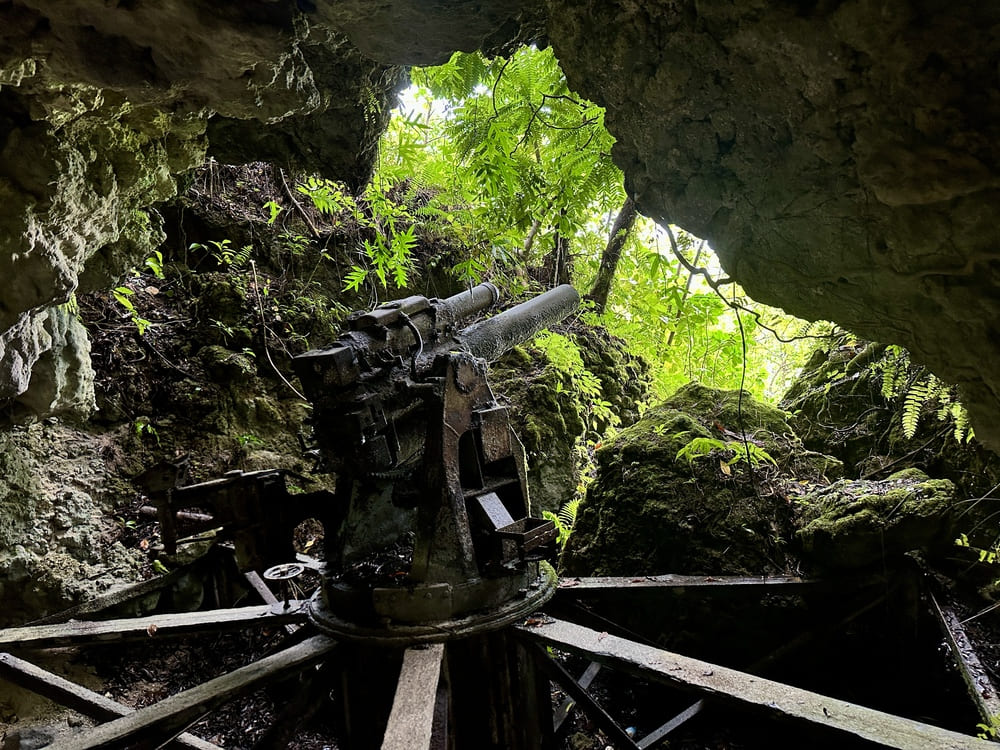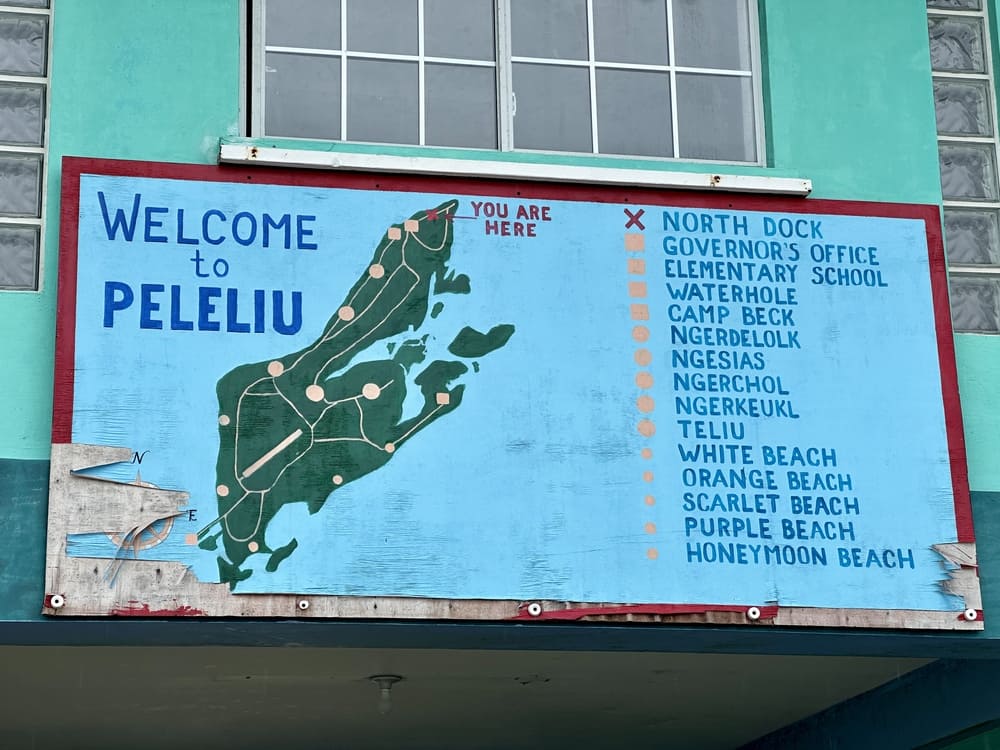Nestled in the Western Pacific Ocean, the island of Peleliu is renowned for its stunning waters and white sandy shores, creating an island paradise which contrasts with its tumultuous history. Home to about 700 people and part of the nation of Palau, Peleliu became the site of one of the fiercest battles of World War II. In 1944, this tranquil landscape transformed into a battleground, as U.S. Army troops clashed with determined Japanese soldiers in a struggle that would ultimately claim over 2,000 American lives and witness the death of more than 10,000 Japanese troops, marking it as one of the bitterest confrontations for the Pacific Theater during WWII.
On our annual Least Visited Countries Tour, we venture deep into the heart of Peleliu to hunt for the relics of this gruelling battle, though one does not have to look very far. The island is like an open air museum dotted with war relics from this horrific fight.
What Happened During the Battle of Peleliu?

By 1944, the US had gained serious ground in the Pacific and had brought the frontline ever closer to Japan itself. As a direct assault on mainland Japan was considered by the US, and taking Peleliu – and its airstrip – was crucial to any invasion plans. The US Marines were chosen for the job. But lying in wait behind the sleepy shores and lush jungles of Peleliu were over 11,000 hardened Japanese troops preparing to defend the island or die trying.
Unbeknownst to the Americans, the Japanese had learned from their defeats and changed their tactics; no longer would the enemy be stopped at the beaches, but lured into the interior of an island riddled with heavily fortified bunkers, caves, traps and underground positions all designed to stop grenade and flamethrower attacks. The Japanese needed every man they had and disbanded the wasteful and ineffective “banzai charge”. They were going to ensure the Peleliu’s tranquil waters ran red with blood.
After a heavy naval bombardment, the US ran out of targets and believed the Japanese to be decimated. In reality, they were mostly unscathed and lay in wait for the Americans. As the first wave of US troops landed, men and machines were obliterated as the Japanese revealed themselves and fired on all flanks, killing hundreds. Regardless, the Marines held their ground and pushed into the island for the gruelling fight to capture the airfield in 115°F (46°C) heat. After 73 days and mass slaughter, the island was captured. On 24 November, Japanese commander Nakagawa proclaimed “our sword is broken and we have run out of spears” before burning his regimental colors and performing ritual suicide. Despite the complete defeat, over 30 Japanese troops held out in the caves of Peleliu until 1947. As the United States continued to use the airstrip (and still does to this day) after the war, the surviving Japanese soldiers did not think the war had ended as they could still hear planes taking off and landing at the nearby airfield. They only surrendered after being convinced to come out of their cave hideouts by a former Japanese Admiral.
How Do I Get to Peleliu Island?
Peleliu today is not hard to visit once in Micronesia. If you’re visiting Koror and have grown a bit tired of looking at tropical fish and eating the local fruit-bat soup, you can hop over to Peleliu on a day trip, as it’s only a one-to two-hour boat rid, with private water transport available. Today Peleliu’s airport still serves some expensive charter flights. Due to the current tensions in the Pacific, the airfield is being rehabilitated and expanded by US marines and workers.


When you take a tour around the island, you are warned to stay on the marked trails, as unexploded ammunition still can be found in the jungle.
If traveling with YPT, you will visit the “1000-man cave”. It has 284 meters (933 feet) of tunnels, with 33 alcove side rooms along the sides of six, linked hallways. As the name implies, there were about 1,000 Japanese soldiers posted here in early September 1944. By September 29, about 50 remained. The last one did not yield the cave until February 1, 1945.
Not far from the cave, you can now see the school of Kloulklubed, which was built in 1945 when the population returned. It may be the oldest school in Micronesia.
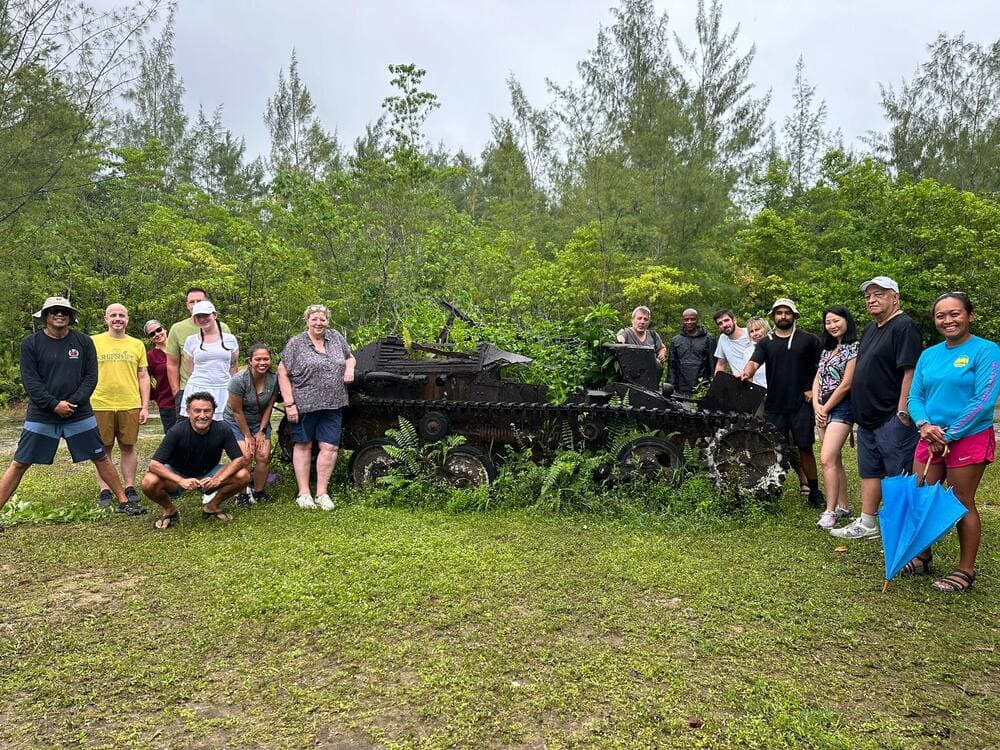
As you venture further, you’ll uncover an impressive array of World War II wrecks and war relics, with many scattered throughout the wilderness and others thoughtfully preserved in the island’s dedicated museum. Obliterated Sherman tanks, Japanese Zero planes and tanks, war-ravaged Peleliu airport buildings and sandbagged Peleliu caves with equipment and helmets lying around where many trapped Japanese committed ritual suicide as the net closed around them. In many ways Peleliu could be likened to the Angkor Wat of the Pacific, with nature having taken over these impressive Japanese colonial-era buildings.
To round off the day, you will hike up to the 300-foot-high peak of Umurbrogol Mountain. This is where the bulk of over 500 heavily-fortified caves and tunnels under Japanese control were located. The Umurbrogol Mountain was nicknamed “Bloody Nose Ridge.” The pre-landing naval bombardment destroyed virtually all vegetation on the ridge. This meant that advancing US soldiers had nowhere to hide and casualties here were enormous. At the summit stands a poignant memorial honoring all who lost their lives here, inscribed with the solemn words: “LEST WE FORGET.”
The Peleliu Island Tour is part of YPT’s action-packed Least Visited Countries Tour. Join us next year and experience this incredible corner of paradise for yourself!
